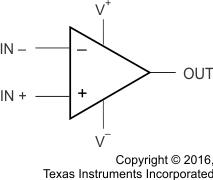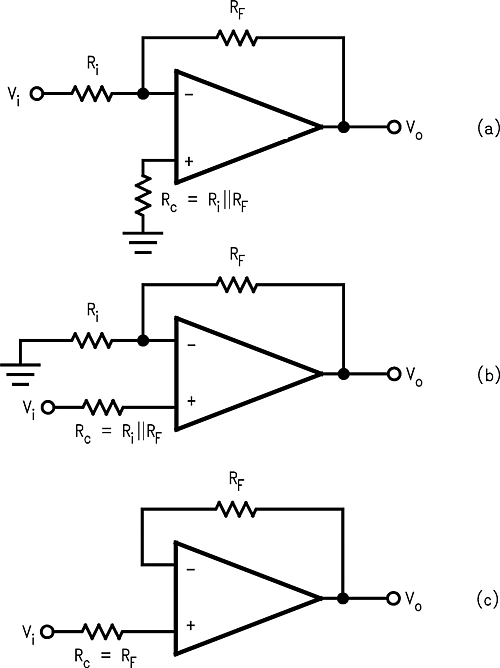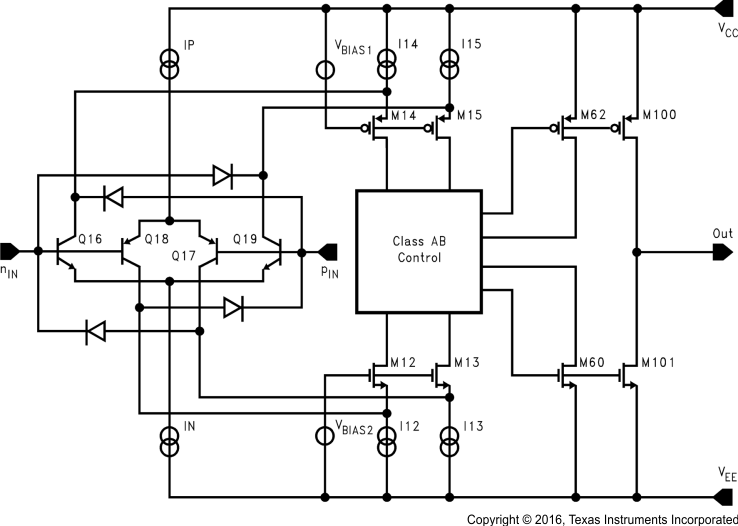SNOS993P November 2001 – April 2017 LMV931-N , LMV932-N , LMV934-N
PRODUCTION DATA.
- 1 Features
- 2 Applications
- 3 Description
- 4 Revision History
- 5 Pin Configuration and Functions
-
6 Specifications
- 6.1 Absolute Maximum Ratings
- 6.2 ESD Ratings (Commercial)
- 6.3 Recommended Operating Ratings
- 6.4 Thermal Information
- 6.5 DC Electrical Characteristics 1.8 V
- 6.6 AC Electrical Characteristics 1.8 V
- 6.7 DC Electrical Characteristics 2.7 V
- 6.8 AC Electrical Characteristics 2.7 V
- 6.9 Electrical Characteristics 5 V DC
- 6.10 AC Electrical Characteristics 5 V
- 6.11 Typical Characteristics
- 7 Detailed Description
- 8 Application and Implementation
- 9 Power Supply Recommendations
- 10Layout
- 11Device and Documentation Support
- 12Mechanical, Packaging, and Orderable Information
Package Options
Mechanical Data (Package|Pins)
Thermal pad, mechanical data (Package|Pins)
- D|8
Orderable Information
7 Detailed Description
7.1 Overview
The LMV93x-N are low-voltage, low-power operational amplifiers (op-amp) operating from 1.8-V to 5.5-V supply voltages and have rail-to-rail input and output. LMV93x-N input common-mode voltage extends 200 mV beyond the supplies which enables user enhanced functionality beyond the supply voltage range.
7.2 Functional Block Diagram

7.3 Feature Description
The differential inputs of the amplifier consist of a noninverting input (+IN) and an inverting input (–IN). The amplifer amplifies only the difference in voltage between the two inputs, which is called the differential input voltage. The output voltage of the op-amp VOUT is given by Equation 1:
where
- AOL is the open-loop gain of the amplifier, typically around 100 dB (100,000x, or 10 µV per volt).
7.4 Device Functional Modes
7.4.1 Input and Output Stage
The rail-to-rail input stage of this family provides more flexibility for the designer. The LMV93x-N use a complimentary PNP and NPN input stage in which the PNP stage senses common-mode voltage near V− and the NPN stage senses common-mode voltage near V+. The transition from the PNP stage to NPN stage occurs 1 V below V+. Because both input stages have their own offset voltage, the offset of the amplifier becomes a function of the input common-mode voltage and has a crossover point at 1 V below V+.
This VOS crossover point can create problems for both DC− and AC-coupled signals if proper care is not taken. Large input signals that include the VOS crossover point will cause distortion in the output signal. One way to avoid such distortion is to keep the signal away from the crossover. For example, in a unity gain buffer configuration with VS = 5 V, a 5-V peak-to-peak signal will contain input-crossover distortion while a 3-V peak-to-peak signal centered at 1.5 V will not contain input-crossover distortion as it avoids the crossover point. Another way to avoid large signal distortion is to use a gain of −1 circuit which avoids any voltage excursions at the input terminals of the amplifier. In that circuit, the common-mode DC voltage can be set at a level away from the VOS cross-over point. For small signals, this transition in VOS shows up as a VCM dependent spurious signal in series with the input signal and can effectively degrade small signal parameters such as gain and common-mode rejection ratio. To resolve this problem, the small signal should be placed such that it avoids the VOS crossover point. In addition to the rail-to-rail performance, the output stage can provide enough output current to drive 600-Ω loads. Because of the high-current capability, take care not to exceed the 150°C maximum junction temperature specification.
7.4.2 Input Bias Current Consideration
The LMV93x-N family has a complementary bipolar input stage. The typical input bias current (IB) is 15 nA. The input bias current can develop a significant offset voltage. This offset is primarily due to IB flowing through the negative feedback resistor, RF. For example, if IB is 50 nA and RF is 100 kΩ, then an offset voltage of 5 mV will develop (VOS = IB x RF). Using a compensation resistor (RC), as shown in Figure 30, cancels this effect. But the input offset current (IOS) will still contribute to an offset voltage in the same manner.
 Figure 30. Canceling the Offset Voltage due to Input Bias Current
Figure 30. Canceling the Offset Voltage due to Input Bias Current
